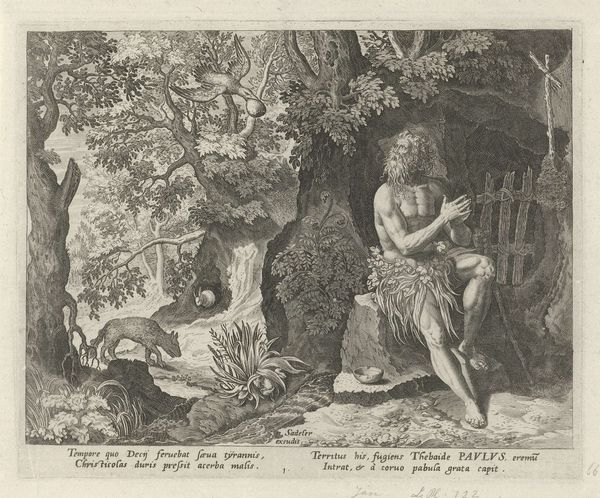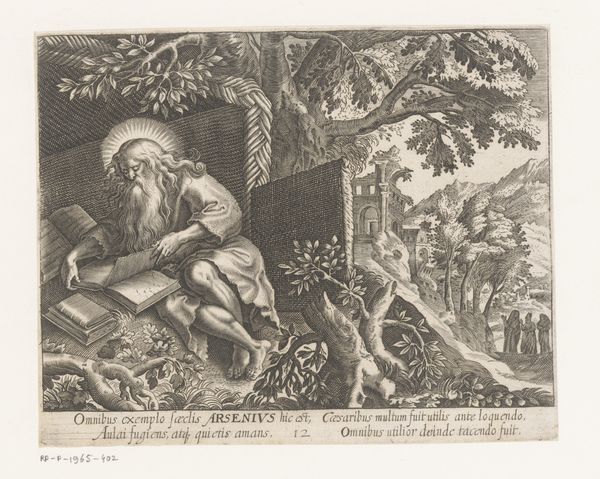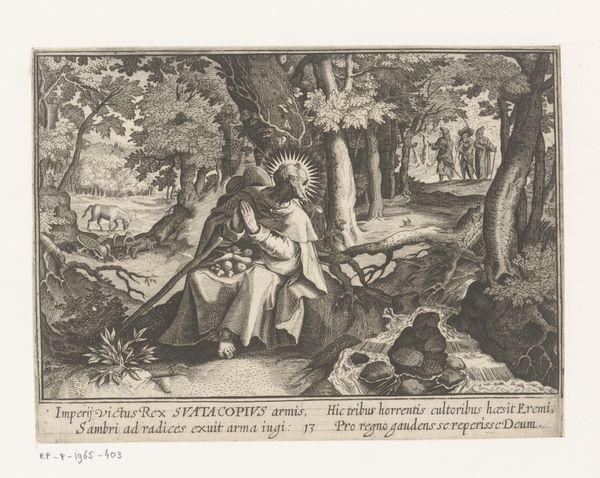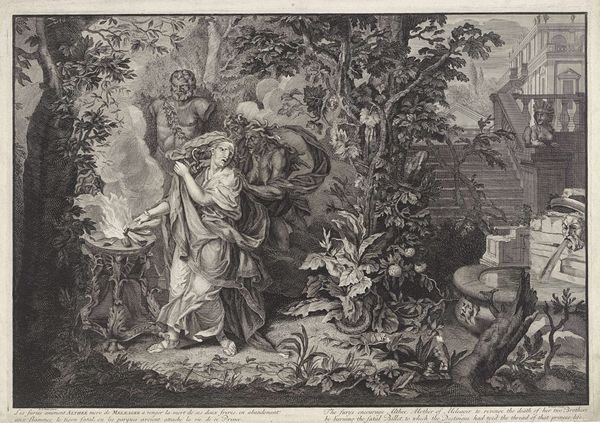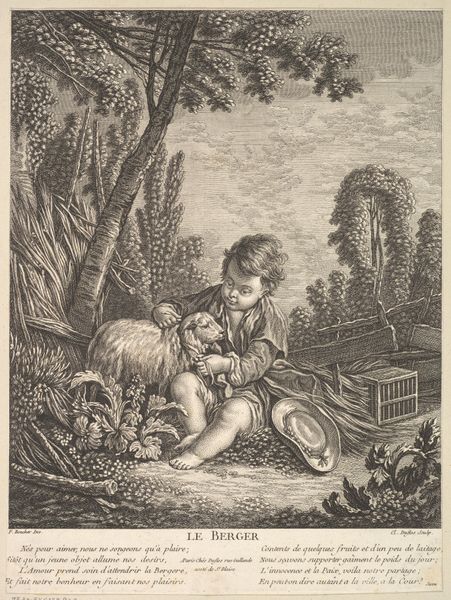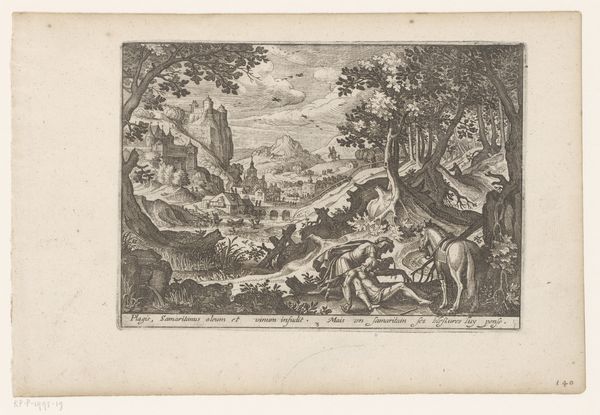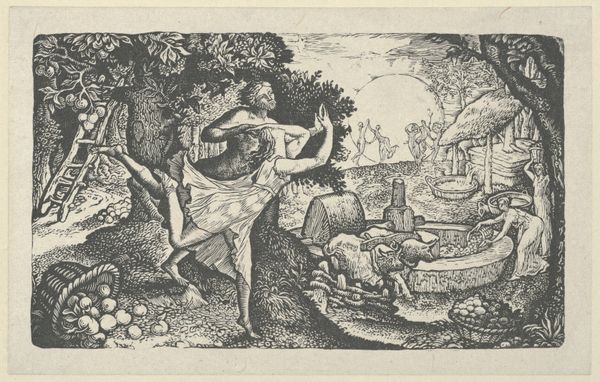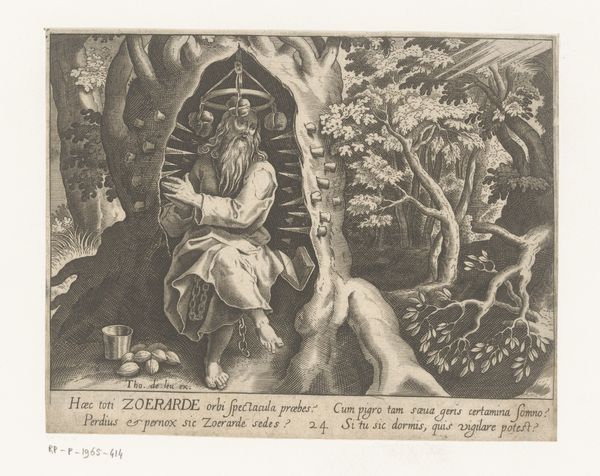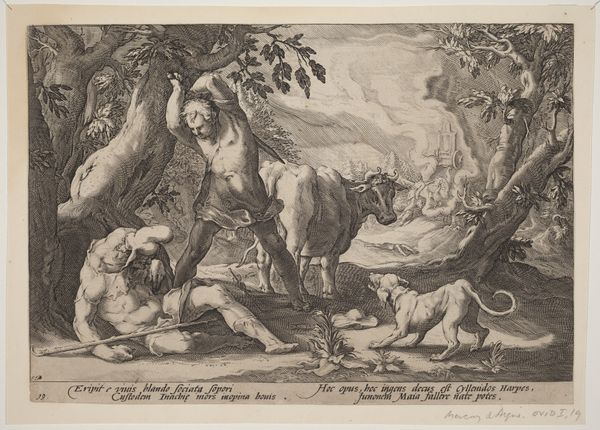
#
pencil drawn
#
comic strip sketch
#
light pencil work
#
pencil sketch
#
old engraving style
#
junji ito style
#
personal sketchbook
#
pen-ink sketch
#
pencil work
#
cartoon carciture
Dimensions: height 147 mm, width 186 mm
Copyright: Rijks Museum: Open Domain
Curator: This stark image before us is entitled "Heilige Jacobus van Karmel als kluizenaar," or "Saint James of Carmel as a Hermit," dating from after 1594, created by Charles van Boeckel. What's your immediate take on it? Editor: Well, it's certainly dramatic. The stark contrast between the figure, presumably the saint, and the looming skeleton creates a really powerful meditation on mortality, wouldn't you agree? There's a real visual tension that grabs you immediately. Curator: Exactly. Van Boeckel situates James within this precise, somewhat severe, narrative – the hermit confronting the transience of life. Considering the period it emerged from, we need to acknowledge how deeply ingrained religious and philosophical concepts were in shaping artistic expression. James's stance, the rosary nearby... everything points to this struggle between earthly existence and spiritual devotion. Editor: Absolutely. It also begs the question, who were the consumers of such images? How did they view these figures within their social landscape? A work like this likely resonated with various socio-political strata, whether it be in ecclesiastical, governmental, or family environments. Curator: Yes, and the role of religious imagery within these communities—how they served not just devotional, but potentially also propagandistic, functions needs also unpacking. The intense chiaroscuro, the deliberate contrast between light and dark, it's all employed to guide the viewer’s gaze and, ultimately, their understanding. This isn’t simply about illustrating a biblical scene, it’s about projecting ideals of piety in times of profound religious turmoil. Editor: You’re right, the starkness and heavy shading add a dramatic feel, almost like stage lighting. That element, blended with the iconography, points to a potent social role. It all served a specific cultural and historical function—one deeply intertwined with the dissemination of Catholic doctrine in the era after the Council of Trent. The selection of the imagery was, without doubt, strategically selected. Curator: Agreed. I leave with an enriched vision on how we situate artistic creations inside larger, continuously unfolding discussions on social and cultural values. Editor: Likewise; thinking through this, seeing these images through varied lenses has solidified the socio-political weight they carried. Thank you.
Comments
No comments
Be the first to comment and join the conversation on the ultimate creative platform.

